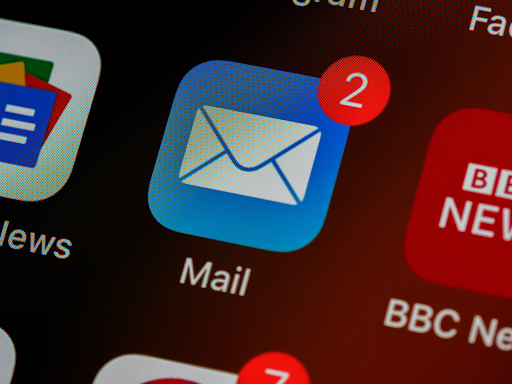The Benefits & Challenges of Using ChatGPT to Build a Website
The idea of a ChatGPT website builder is undoubtedly intriguing. You know that having a well-designed website is crucial for the success of any B2B...
3 min read

Luke Donahue
|
May 17, 2023
Are you struggling to achieve desired results with your B2B email marketing efforts? It's frustrating when your emails end up in spam folders, go unopened, or fail to elicit any response. But don't worry; there are effective ways to diagnose and address these issues.
In this blog post, we'll help you diagnose your email marketing missteps, master the art of crafting engaging B2B emails, and even provide you with a real-life example of a successful B2B sales email. Keep reading to uncover the secrets of email mastery and discover the B2B email best practices that will elevate your email game.
If you'd like an eBook for your reference, simply click below to download it for free!
To determine the root cause of your email marketing challenges, turn to the valuable insights provided by your customer relationship management (CRM) software. By analyzing delivery rates, open rates, and click-through rates, you can pinpoint areas for improvement.
If you haven't yet embraced a CRM for your B2B email marketing, now is the time to take action. A robust CRM tool is essential for successful sales and marketing communication, equipping you with the digital capabilities needed to thrive.
Begin by examining your email's delivery rate. While aiming for a 100% delivery rate is ideal, a figure around 95% is more realistic. If you consistently fall short of this benchmark, a significant portion of your emails isn't even making it to your recipients' inboxes. This suggests a problem that needs attention.
Two likely scenarios exist. First, your email's content may be triggering spam filters. Compare the performance of different emails to identify patterns and make adjustments to avoid being flagged as spam. Additionally, if your emails still fail to reach inboxes, your domain might be blacklisted. In such cases, you must appeal to the email hosts to rectify the situation.
If your delivery rate is satisfactory, focus on your email's open rate.
The open rate dilemma can stem from two common causes. Firstly, your email list may not be of high quality. If you've purchased a list, chances are the recipients find your offerings irrelevant, resulting in poor engagement. To address this, avoid buying contact lists and instead employ effective inbound marketing strategies tailored to your business.
Secondly, your subject line might not be compelling enough. Craft subject lines that are concise, intriguing, and personalized whenever possible. Experiment with different techniques, such as incorporating emojis, to make your emails stand out in a competitive landscape. Remember to stay updated with evolving email marketing practices to maintain an edge.
Once you've achieved satisfactory delivery and open rates, it's time to tackle the challenge of low click-through rates.
Related Article: What to Expect from an Inbound Marketing Strategy
A low click-through rate indicates a lack of engagement with your email's content. To improve this metric, consider the following:

Just like athletes analyze game footage to identify winning strategies, examine your successful emails to uncover the tactics that yield positive results. These insights can be invaluable in shaping your current campaigns, saving you from starting from scratch.
Before hitting that send button, enlist someone else to review your email. Their fresh perspective can help ensure clarity and eliminate any confusion. Remember, what makes sense to you may not resonate with your audience.
Leverage the power of testing tools provided by your CRM software. Conduct A/B tests to compare different email variations and determine which ones perform better. By understanding your audience's preferences through these tests, you can deliver the right content at the right time, maximizing engagement and conversions.
Take advantage of our free B2B email template that you can customize to your company's needs. (The template is in the eBook download)
If you require further assistance, consider partnering with a specialized marketing agency like Open Path Digital. Their expertise in B2B email marketing can help you acquire better leads and develop an effective digital marketing strategy aligned with your goals.
Achieving success in B2B email marketing requires a strategic approach. By diagnosing the flaws, leveraging analytics, and optimizing delivery, open, and click-through rates, you can maximize the effectiveness of your campaigns. Continuously learn from past experiences, seek external perspectives, and leverage testing tools to refine your strategies.
And remember, if you need expert guidance, reach out to professionals specializing in B2B email marketing success. Let Open Path Digital empower you to reach your marketing goals effectively and efficiently. To learn more about sending fantastic emails or even how to get more qualified leads, give us a call. We’d love to empower you to reach your marketing goals.

The idea of a ChatGPT website builder is undoubtedly intriguing. You know that having a well-designed website is crucial for the success of any B2B...

We find ourselves in the midst of the digital age, where marketing plays a crucial role. In this era,...

It may sound simple, but to create an effective marketing plan, businesses must first understand their potential customers and how to engage with...

When acquiring or transforming a business for market leadership, your decisions require valuable input. Effective delegation is vital to your success...